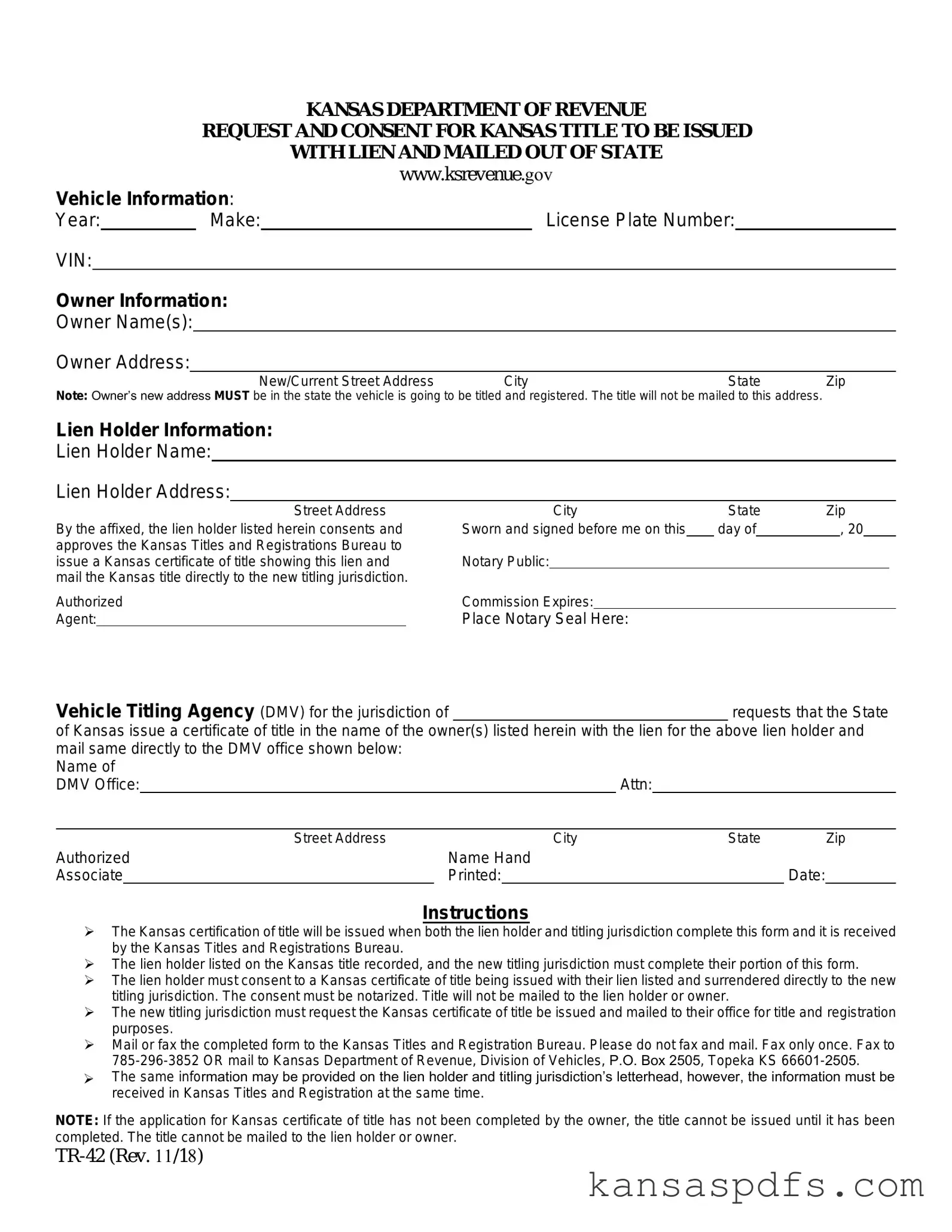What is the TR-42 form used for in Kansas?
The TR-42 form is requested by the Kansas Department of Revenue's Division of Vehicles for the specific purpose of issuing a Kansas title with an existing lien and mailing it out of state. This procedure is necessary when the vehicle's owner relocates out of Kansas and needs to update the vehicle's registration and title to reflect the new state of residence while ensuring the lienholder's interest is maintained on the title.
Who needs to complete the TR-42 form?
Both the lienholder listed on the Kansas title record and the new titling jurisdiction in the owner’s new state must complete their respective portions of the TR-42 form. Additionally, the lienholder's consent section must be notarized to confirm their agreement for the Kansas title to be issued with their lien and sent directly to the new titling jurisdiction.
How should the TR-42 form be submitted to the Kansas Department of Revenue?
The completed TR-42 form can either be mailed or faxed to the Kansas Titles and Registrations Bureau. Fax submissions should be sent to 785-296-2383, and mail submissions should be addressed to the Kansas Department of Revenue; Division of Vehicles, Attn: Print Title w/ Lien, 915 SW Harrison; Topeka, KS 66626-0001. It is important to choose only one method of submission to avoid duplications—either fax or mail, but not both.
Is it possible to use a letterhead in place of the TR-42 form?
Yes, the same information required on the TR-42 form may be submitted on the lien holder and new titling jurisdiction’s official letterhead instead of the form itself. However, it is crucial that the information provided on the letterhead is received at the Kansas Titles and Registration at the same time to ensure proper processing.
What happens if the vehicle owner’s application for a Kansas certificate of title is incomplete?
If the vehicle owner has not completed the application for a Kansas certificate of title, the title cannot be issued until this prerequisite is fulfilled. This means the process outlined in the TR-42 form cannot proceed until all necessary documentation by the vehicle owner is fully completed and submitted.
Can the title be mailed to the lien holder or the vehicle owner?
No, the title processed using the TR-42 form will not be mailed to the lien holder or the owner. Instead, it will be directly mailed to the new titling jurisdiction’s office that is requesting the issuance of the Kansas certificate of title with the lien noted. The form specifies that the owner’s new address must be outside the State of Kansas, indicating the vehicle will be titled and registered in a new jurisdiction.

